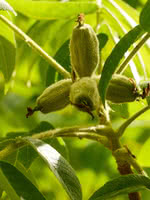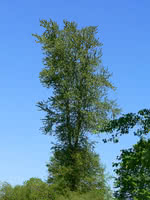Mon-Fri 9am - 5pm Mountain time
Butternut (White Walnut) vs Black Cottonwood
Juglans cinerea
Populus trichocarpa
Butternut is one of the few walnut varieties native to Canada. The nuts are sought after for their mild, sweet, and oily taste. Ensure this tree is planted in full sun and well-drained soil for best results.
Butternut is self-fertile but it has better yields when planted near other butternuts. It can survive in zone 2, but reliably produces nuts in zone 3.
A top CO2 absorbing species. Experts think this tree may help climate change more than others.
Black Cottonwood is the largest and tallest of the North American poplars. Named after its white, fluffy seeds with cottony hairs, this hardy tree produces sticky, fragrant buds and has a straight growth habit. Black Cottonwood needs ample moisture and nutrients to grow successfully to full height and are found in the Western provinces and the Yukon with BC being its heartland.

